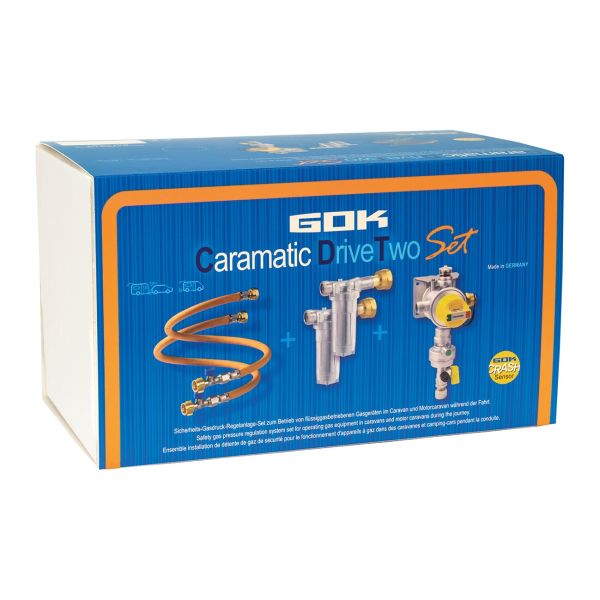The gas pressure control systems Caramatic DriveOne and Caramatic DriveTwo enable heating while driving by means of an integrated mechanical crash sensor with a pendulum solution. The sensor shuts off the gas flow in the event of an accident with a delay of 3.5 g ± 0.5 g acting directly on the release element. With an average vehicle weight, this corresponds to an impact speed of approx. 15 to 20 km/h against a solid obstacle.
- Europe-wide use thanks to country-specific high-pressure hose lines – Caramatic ConnectDrive (not included)
- Test device for leak testing of the liquid gas system without dismantling the pressure regulating device
- Version with outlet connection RVS 10/8 is equipped with a transition piece for connection to 8 mm pipes
Advantages of the crash sensor with pendulum solution:
- Faster and easier commissioning as well as reset after response
- More precise functioning and therefore fewer faults due to incorrect response behaviour
- Start-up possible without any problems, even if the recreational vehicle is in an inclined position
Safety gas pressure control system with automatic switch valve for operating two-cylinder systems in caravans and motorhomes while driving. For connection to gas cylinders via high-pressure hose line and for pressure control to the nominal pressure of the gas device.
Consists of:
- Automatic switch valve
- Low pressure regulator with safety relief valve PRV
- Mechanical crash sensor with new pendulum solution
- Control knob
- Operating and reserve indicator
- Check valve
- Test device and wall bracket
- 2 x Caramatic ConnectClean with angle bracket
- 2 x Caramatic ConnectDrive
Advantages and features: Heating while driving thanks to integrated mechanical crash sensor with a new pendulum solution, which shuts off the gas flow in the event of an accident with a deceleration of 3.5 g ± 0.5 g acting directly on the trigger element. This corresponds to an impact speed of approx. 15 to 20 km/h on a fixed obstacle with an average vehicle weight.

